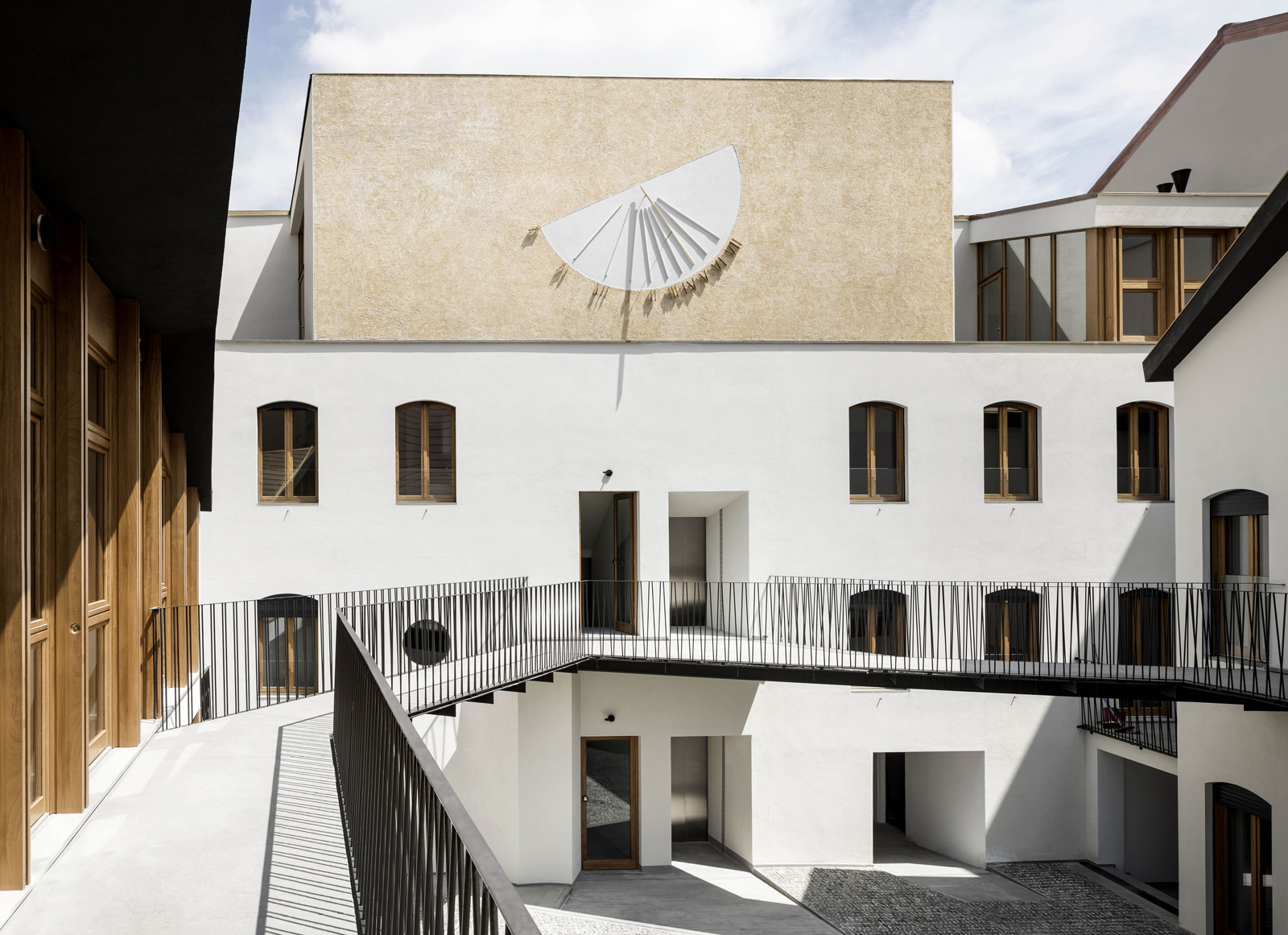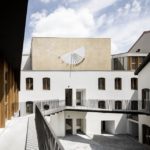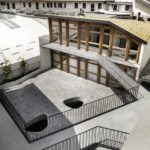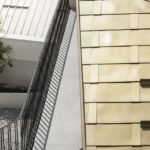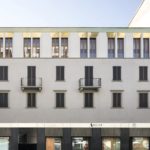Residenze Canonica by Deamicisarchitetti | International Residential Architecture Awards 2019
To intervene on a building facing the street raised a question on whether to act through its replacement or through a reconstruction and volumetric integration. Choosing the latter answers two complementary instances: on the one hand to avoid a complete demolition and reconstruction and on the other the desire to preserve the memory of the pre-existing building as part of the urban scene.
The choice to contaminate the old and the new is part of a more general conviction for which it is believed that rewriting the history of a building by modifying it and transforming it is often more interesting than its annulment and replacement, as has become evident, even on a urban scale. What is interesting about this approach, even in the specific case of Canonica’s street, is the attempt to make tangible the sense of time within the project. Where the preservation of parts of pre-existing buildings is not in open contrast with the programmatic requirements, the presence of the signs of the time is in fact recognized as an intrinsic quality since, in the mutual relationship between new and already settled urban and semantic relations, it allows redefining both the value of memory and that of contemporaneity.
The first and second floors were therefore maintained in their original forms, while the ground floor and, of course, the additional crowning plan were completely redesigned. From the point of view of the composition, we tried to respect the alignments of the preserved part, providing, both for the basement and for the crowning, full-height openings not recognizable as real windows but as cuts within the belonging band. These voids are connected with the façade’s thread using flared counters with different angles in order to regularize and reabsorb the differences originated by the steady pitch of the axes of the existing windows.
In line with the Milanese tradition, extremely diversified finishes were applied to the wall surfaces: absolute black marble worked for the basement, cement plaster in hammered paste for the central body, and finally smooth marble for the crowning, which in turn presents a terminal in brass, a material that also occurs in the signs of the string course and in the railings of the shops.
Building and distribution type
The intervention foresees a new articulation of the morphology of the lot with the aim of increasing the dimensions of the open spaces and to clarify the relationships between the single parts, and, at the same time, proposes its typological redefinition.
An operation that must respond to the dual objective of serving the three buildings without generating significant easement from just one stair case and one lift, and at the same time to ennoble the building, in accordance with the change in environmental value that has gradually taken on the reference context, once peripheral and popular, and today subject to profound redevelopment and new centrality.
The new court was raised about 2 meters above street level both to re-proportion the relationship between open and built space (modified by the increase in heights at the margins), and to allow the construction of the underground garages without resorting to excavations under the share of the foundations of the surrounding houses. The new court, by virtue of its exclusively pedestrian use, is configured as a shared domestic space available to the inhabitants.
The formal continuity of the court is also underlined by the presence of the same treatment of the facades and by the same type of finishing of the walls (white plaster) on two of the three buildings. The third, which has a facade made entirely of wood and glass, breaks this pattern by “opening” the perception of space.
The apartments in total are 16 (simplex, duplex and loft).
Roofs
The roofs are modeled and articulated according to the dual purpose of giving unity to the intervention and allowing the greatest possible penetration of light into the court.
The roof of the body facing the road has a section that allows the positioning of solar and photovoltaic panels in an invisible position, and at the same time to obtain significant heights inward correspondence with the windows, with a significant increase in brightness. This geometric artifact balances the reduced heights of the rooms imposed by the law on the recovery of attics.
International Residential Architecture Awards 2019
Third Award– Category: Residential Built
Architect: GIACOMO DE AMICIS
Firm: Deamicisarchitetti
Project Location: Milano
Team: Bruna Rivolta, Luigi Lorenzi
Country: Italy


